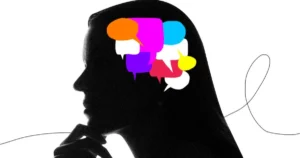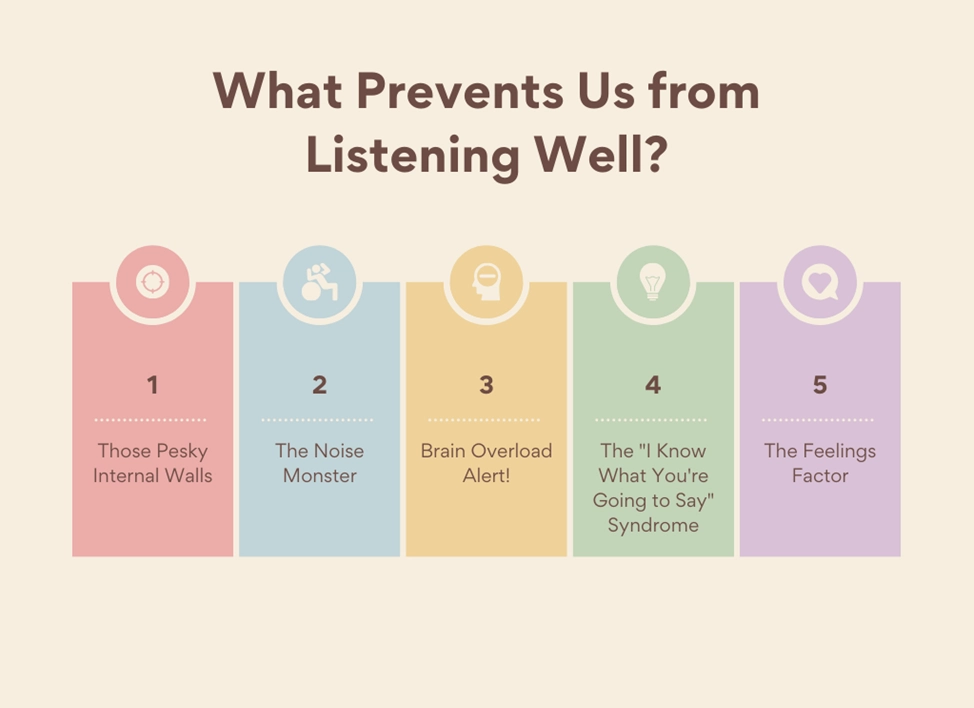Active listening is a talent we all possess with some awareness and effort; it’s not rocket science. In fact, we can make more profound and meaningful relationships with others when we put down our phones, quiet our minds, and take the extra time to listen to what they say. Consider how great it feels when someone pays you whole attention; you can also do this for others.
Remember that you’ll find better discussions, closer connections, and fewer misunderstandings by using these basic skills and being aware of typical listening hurdles. So, in your very next discussion, you can start.
In this article, we will go through all the tips and tricks to help you build better relationships with active listening.
What is Active Listening?
Carl Rogers and Richard Farson first presented an effective conversation skill called “active listening” at the University of Chicago in 1957. According to their research, listening to someone talk isn’t as important as being fully present. No cell phones, no other things to do, just real attention.
When someone talks, you pay close attention to both what they say and how they feel. Awesome, right?? It was amazing what the study showed; people change when they feel truly heard. They grow mentally, feel more sure of themselves, and feel safer talking about how they feel.
Rogers and Farson found that people talk and share more when they know someone is interested in what they have to say. Don’t judge or talk over them; just listen and understand. Best part?
According to their study, active listening is more than just nodding your head and saying “yeah” once in a while. It’s about picking up on everything, like body language, tone of voice, and words that aren’t said. Yes, you have to practice (nobody does it perfectly the first time), but the effects are amazing. In the end, you build true connections with others in both your personal and professional lives. This is what makes active listening so special: it turns everyday talks into relationships that matter.
Why is Active Listening Important for Building Strong Relationships?
Active listening helps us really understand what other people are saying behind their words, which is what turns everyday talks into important relationships.
1. Enhanced Emotional Growth – The Power of Being Heard
Rogers and Farson found that something wonderful happens when individuals feel really heard: they become psychologically more mature. It’s like how a flower blossoms with the proper care. People open and flourish when someone listens to them as well.
- People let their guard down and experience personal safety.
- They are more eager to experience fresh activities and experiences.
- They begin to think more broadly and less tightly.
- They begin to feel comfortable expressing their true thoughts.
- Everything shifts to be nicer and honest.
It’s not just for a little while. The study showed that deep listening helps people become mentally strong over time. Building a strong base is like making a house; once it’s ready, everything else can be built on top of it!
2. Customer Satisfaction – Listening Before Speaking
Min, Jung, and Ryu’s 2021 investigation revealed something very amazing. They learned that the best way to deal with customers is to listen first and then say sorry. It is very important but not hard to understand. People felt like VIPs when service workers took the time to listen carefully before saying sorry.
This is what the study found that changed the game:
- Customers are happy when you listen to them before you say sorry.
- When people felt heard, they left bigger tips.
- You can’t just say “sorry” without first listening.
- It’s very important when you respond.
Think about it this way: when someone is upset, they don’t want a quick “I’m sorry”; they want to know that you understand what’s bugging them. According to the study, this simple change in strategy (listening first, then reacting) completely changes how people feel about the service they get.
3. Better Learning Through Active Listening – The Classroom Revolution!
Let’s examine what Maceiras and associates discovered in their brand-new 2025 research! After studying 9 school years (2014-2023) with around 150 kids each year, they discovered something really interesting. Active listening in the classroom aims to create an amazing learning atmosphere in which every child is totally engaged, not merely to help them stay quiet.
- Students were very happy with hands-on learning, with 90% saying it was great!
- Short-term learning gained a lot of support.
- The students bonded more closely to their professors as well as to the topic.
- The class attracted a lot of participation.
- Everybody was more willing to learn.
Standard methods were better for helping people remember things over the long term, while active listening techniques were good for learning and paying attention at the moment.
What Prevents Us from Listening Well?
It’s hard to pay attention to what other people are saying when our minds are constantly jumping from one thought to the next. Here are some of the reasons:
1. Those Pesky Internal Walls (Based on Rogers & Farson, 1957)
We all create unseen barriers when someone is speaking to us. The study shows that it’s completely normal, and we do it automatically without realizing it! Here’s what’s going on in our minds:
- We are afraid of being judged, like when a friend comments on your new haircut.
- Our brain goes into protection mode and says, “No, I’m not accepting this!”
- We begin to look at everything based on our own ideas and experiences.
- Sometimes, we focus so much on keeping ourselves safe that we overlook the positive things.
Rogers & Farson found that being stubborn isn’t just a personality trait; it’s actually a way our brain tries to keep us safe. But the problem is that when we’re focused on protecting ourselves, we miss the chance to truly connect with others.
2. The Noise Monster (Rizzi & Bidelman, 2024)
Well, this is very intriguing. Rizzi and Bidelman discovered that noise isn’t just bothersome; it’s interfering with our brains in some really strange ways.
- The background noise actually affects how our brain understands words, as shown by some advanced brain scans.
- Our poor brain has to work hard to screen out all the extra sounds
- The more noise there is, the more effort our brain needs to put into understanding simple words.
- People who are good at “gradient listening,” or adjusting their listening style, manage noise more effectively.
What’s amazing is that their study showed that even little background sounds may interfere with our ability to listen. Think about having a heart-to-heart at a crowded coffee shop: your brain is trying to concentrate on your friend’s words while simultaneously stifling the sounds of the espresso machine, other conversations, and one particularly noisy laptop user. It’s hardly surprising that sometimes we miss vital things!
3. Brain Overload Alert! (Maceiras et al., 2025)
Maceiras and team’s 2025 research on the processing constraints of our brain discovered something amazing. Following nine years of research on 150 students yearly, they found that we forget almost 60% of what we hear in only 24 hours without active participation.
We’re not poor listeners; our brains just have a built-in capacity limit, just as a full inbox has to be cleared before allowing fresh messages.
When we get overloaded with information, our thoughts tend to forget some details. You know, it is just impossible to capture every single drop of rain during a storm! The research revealed that mental tiredness is also quite important.
Our listening skills suffer greatly when we’re fatigued, which makes it much more difficult to understand and remember what we’re hearing. The good news is here: Knowing these restrictions lets us work with them rather than against them.
4. The “I Know What You’re Going to Say” Syndrome (Min, Jung & Ryu, 2021)
Ever find yourself practicing your reply while someone else is still speaking? Min and colleagues’ 2021 research found something rather interesting about our listening preferences.
Their studies revealed that client satisfaction ratings were lower among service workers who rushed to apologize before giving their full attention.
- Those who concentrated on responding missed up to 40% of what was being said.
- Our brains attempt to multitask; we plot our amazing reply while actually listening.
- This mental juggling act results in our really missing the true meaning.
5. The Feelings Factor (All Studies Combined)
Emotions and hearing are closely linked! When our emotions are doing the cha-cha, our ears kind of close off:
- Anxiety is like fuzz on a radio; it makes it hard to hear what’s being said.
- Our brain moves into survival mode rather than listening mode when we are anxious.
- When you’re tired, your brain’s power is low at 10% — everything feels slow.
- Strong feelings can cloud your thoughts and make it difficult to understand clearly.
- The secret is learning when our emotions are interfering with our ears!
7 Key Techniques for Active Listening
Want to improve your listening but do not know where to begin? Here are some simple techniques that can help you listen and connect better with others. You don’t need any special training; you can start using them right away.

1. Reading the Unspoken Story: Non-Verbal Cues
Think of nonverbal signals as subtitles accompanying someone’s speech; they highlight the actual meaning behind what is said! Studies show that often, even before we speak, our bodies show what we are experiencing.
Useful Actions:
- Look first at the face.
- See eyebrow motions (surprise, confusion).
- Look for real smiles (eyes crinkle!) instead of fake ones.
Basics of body language:
- Leaning in = curiosity
- Arms crossed = possible discomfort
- Fidgety = nervousness or annoyance
Search for vocal cues:
- Speed changes—faster often equals either thrill or worry.
- Volume changes—quieter might indicate doubt.
- Variations in tone (soft means comfort, harsh signifies dissatisfaction)
2. The Magic Pause: Listen First, Talk Later
The 2021 research by Min & Jung released this bombshell; delaying only three to five seconds before answering may completely change a discussion! It is your brain’s little vacation to help it assimilate what you have heard. Their studies revealed that client happiness went up when service personnel used this approach.
Count silently in your head:
- “1-Mississippi, 2-Mississippi…” (seriously, it works!)
- Use this time to actually process what you heard
- Resist the urge to jump in with solutions
Practice phrases that buy time:
- “Let me think about that…”
- “I want to make sure I understand…”
- “Could you tell me more?”
3. Brain Power Management: The Battery Saver Method
In 2025, Maceiras’ team discovered that our brains need regular “charging” just like iPhones! They discovered that people remembered 60% more when they took regular breaks. Zombie-mode listening is no longer prevalent!
- Most people’s peak energy period is in the morning.
- Stay away from the 3 PM dip.
- Take a 2-minute break after every 20 minutes.
- Have water close by; a hydrated brain improves listening.
- Take quick notes, but don’t spend too much time writing.
- Use images or emojis to express emotions quickly.
- Get up for extended calls.
- Do small stretches whenever you can.
- Change places every fifteen minutes to be alert.
4. The Observer-Listener Technique
Together, active listening and the CCC (Converting Confusion into Clarity) program result in a revolutionary new way of hearing. In “Don’t Be a Crab!” Hooman Motevalli talks about “The Observer” (Level 1 of CCC). When we combine this with active listening, amazing things can happen!
Look at it as having two sets of ears: one listening to the person chatting to you and one monitoring that chattering “Roommate” in your thoughts. This is how you make it work:
1- Beginning with the Inner Check (the observer level):
- Breathe three deep before each significant talk.
- See what your “Roommate” is saying
- Accept these ideas without battling them.
2- Active Listening: Outer Focus Part
- Straight forward your body towards the speaker.
- Keep pleasant eye contact.
- Show your presence by nodding a few times.
3- Overseeing Two Channels
- When your roommate pipes (“This is boring!” or “I know what they’re going to say!”), just pay attention to it.
- Slowly bring your focus back to the speaker.
- Try what Motevalli refers to as “perspective flipping,” going between inner awareness and outside attention.
5- The Echo and Expand Method
Have you ever played the game “Yes, and…“? This is exactly how it is but for actual dialogues! When someone opens up to you, you are like a friendly investigator who not only collects their words but also provides insightful analysis.
Showing them, “Hey, I not only heard you, but I truly GET what you’re saying!” is everything. It helps folks feel as if they have found conversational gold—someone who really gets their conditions!
- Focus on the main point (like catching a baseball – hold onto what’s important!)
- Remember any important information they mention.
- Share your thoughts lightly, like sprinkles on a cupcake—making it better without taking over.
- Remember their emotional temperature: avoid lightening anything they are sharing if it is weighty!
6. Zone Tracking (Same As Possessing Listening Superpowers!)
Think of it this way: you have a unique radar that can pick up on words, body language, and emotional vibrations. It’s as if the movie’s subtitles, images, and music are all conveying different parts of the story at the same time!
Take this guide:
- Zone 1 (Words): Emphasize their actual speech (obvious, but necessary!).
- Zone 2 (Body): Look for those fidgety crossed arms, head tilts,
- Zone 3 (Emotions): Notice the energy in what they say.
Bonus tip: Imagine a mental traffic light system: red for contradicting signals, yellow for matched ones, green for others!
7- Emotional Mapping
By following a person’s narrative, you may follow their emotional journey, much as a skilled DJ can gauge the energy of a crowd and know just when to lower the volume. It’s like negotiating their share with an emotional GPS guiding you!
Map-making steps:
- See their first feeling—that of their emotional “home address.“
- Track the changes, just as one would see a thermometer moving up and down.
- Note the turning points when they flash like a Christmas tree.
- Note the valleys—where their energy declines.
- Look for emotional trends—what subjects shine for them?
Conclusion: The Power of Full Attention
Big shows aren’t what makes a good listener; what matters are the little times when you make a conscious choice to pay attention. Try one easy action the next time someone is speaking to you: put your phone down, inhale, and pay full attention to them.
See how they light on feeling really heard. Active listening is the secret; it turns ordinary talks into actual relationships. The methods we’ve talked about are simple; they just involve being fully present for the people you care about.








